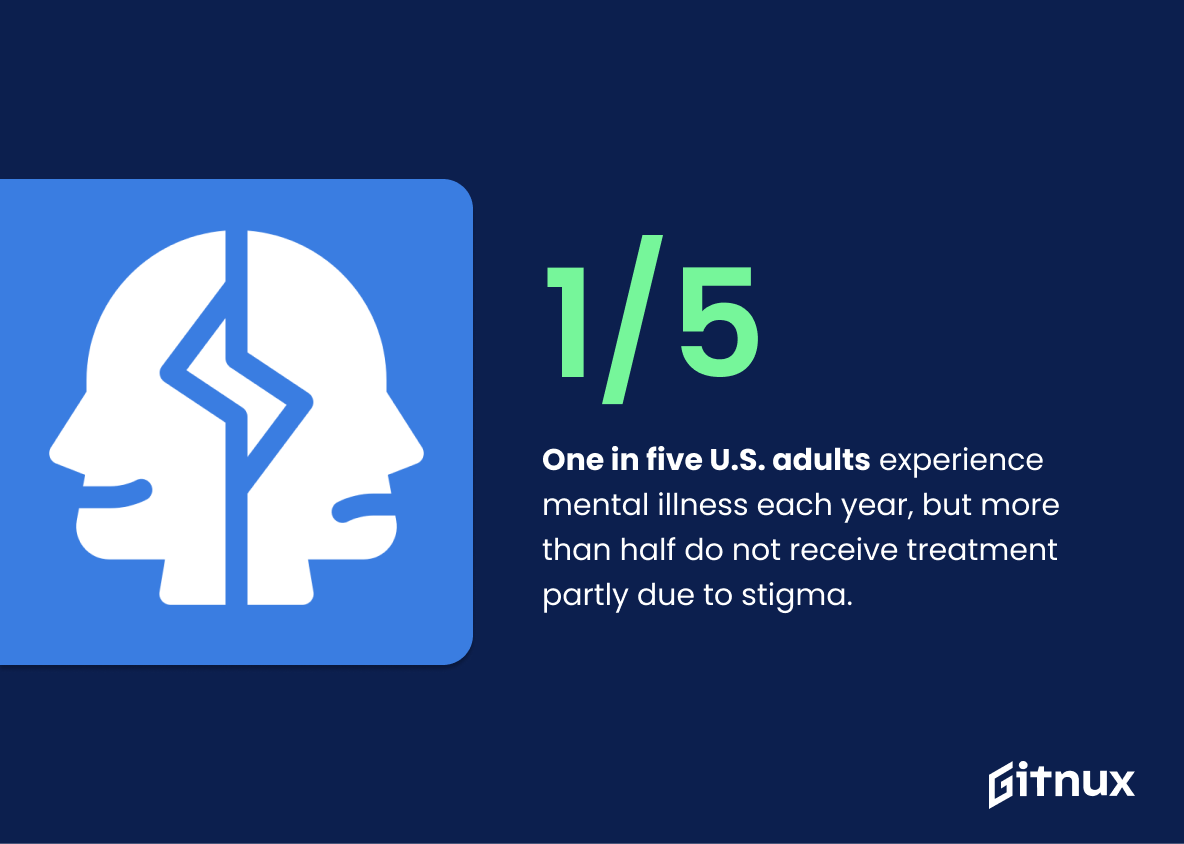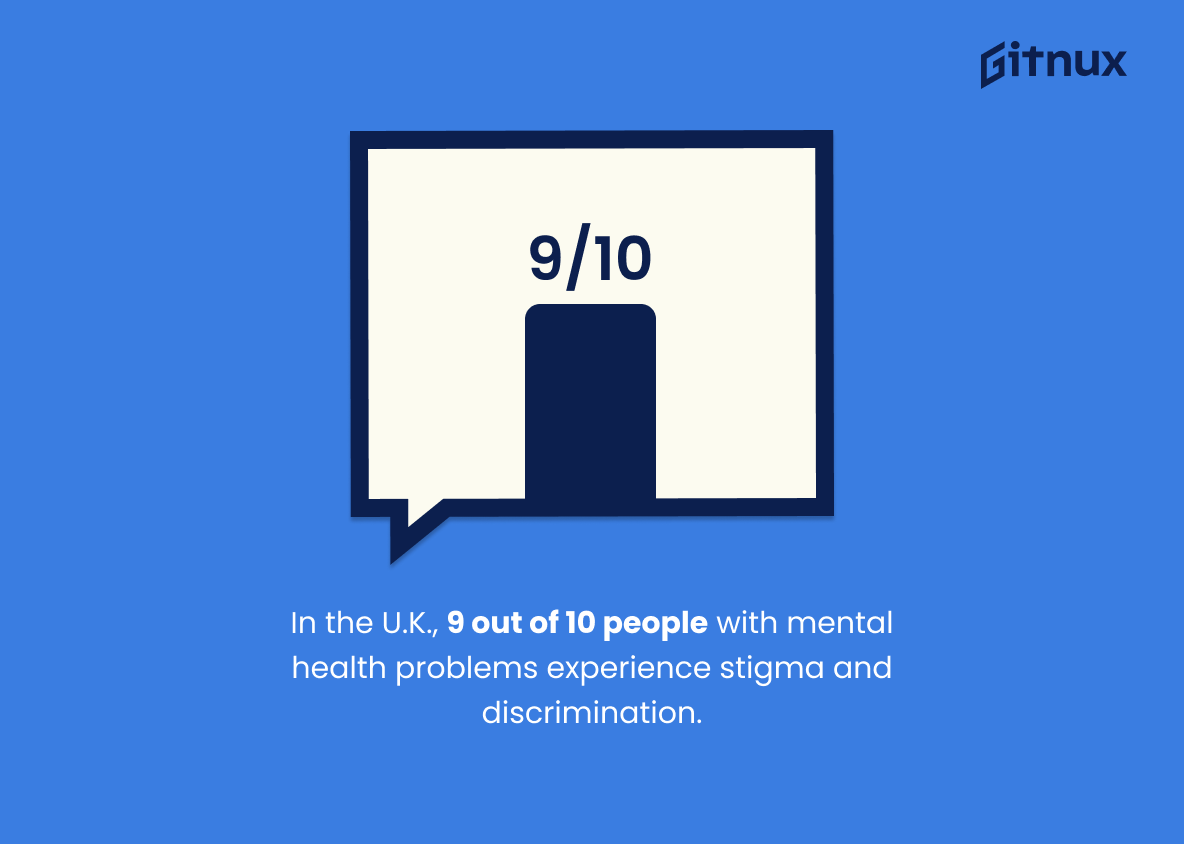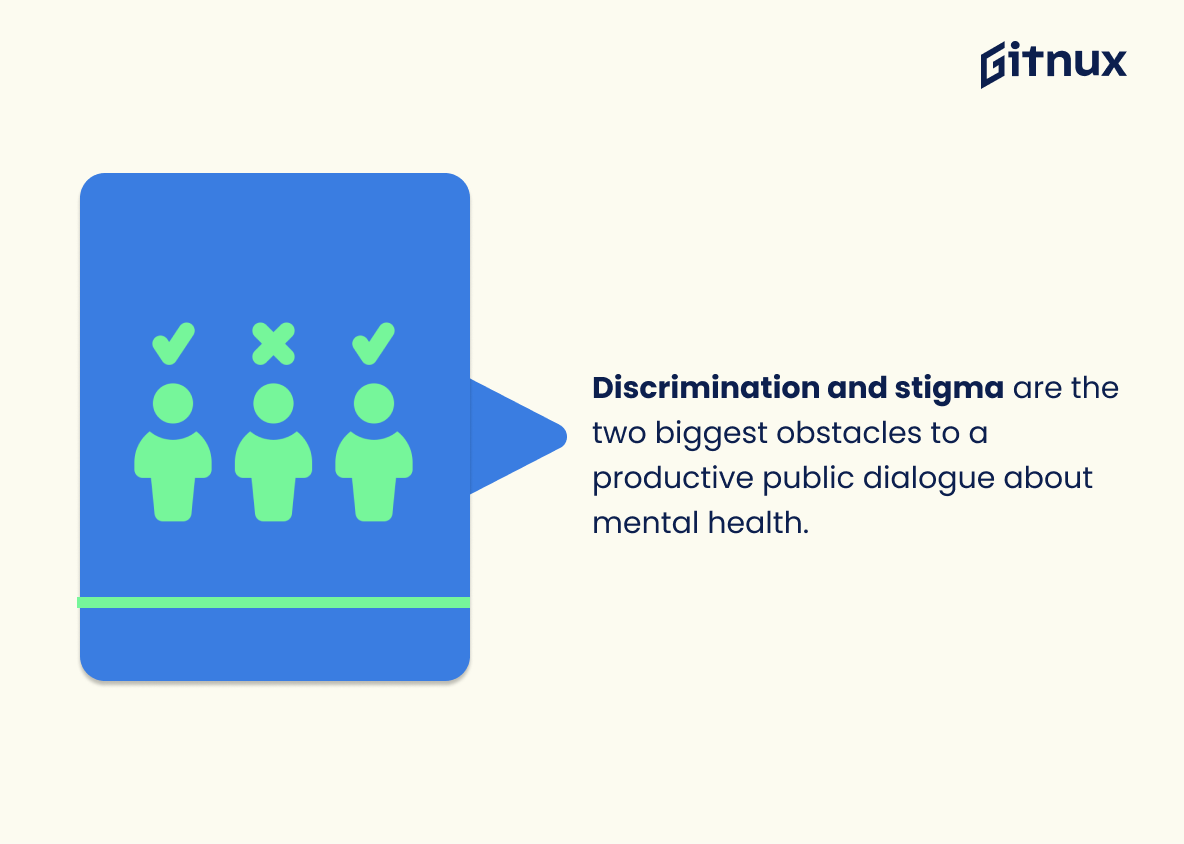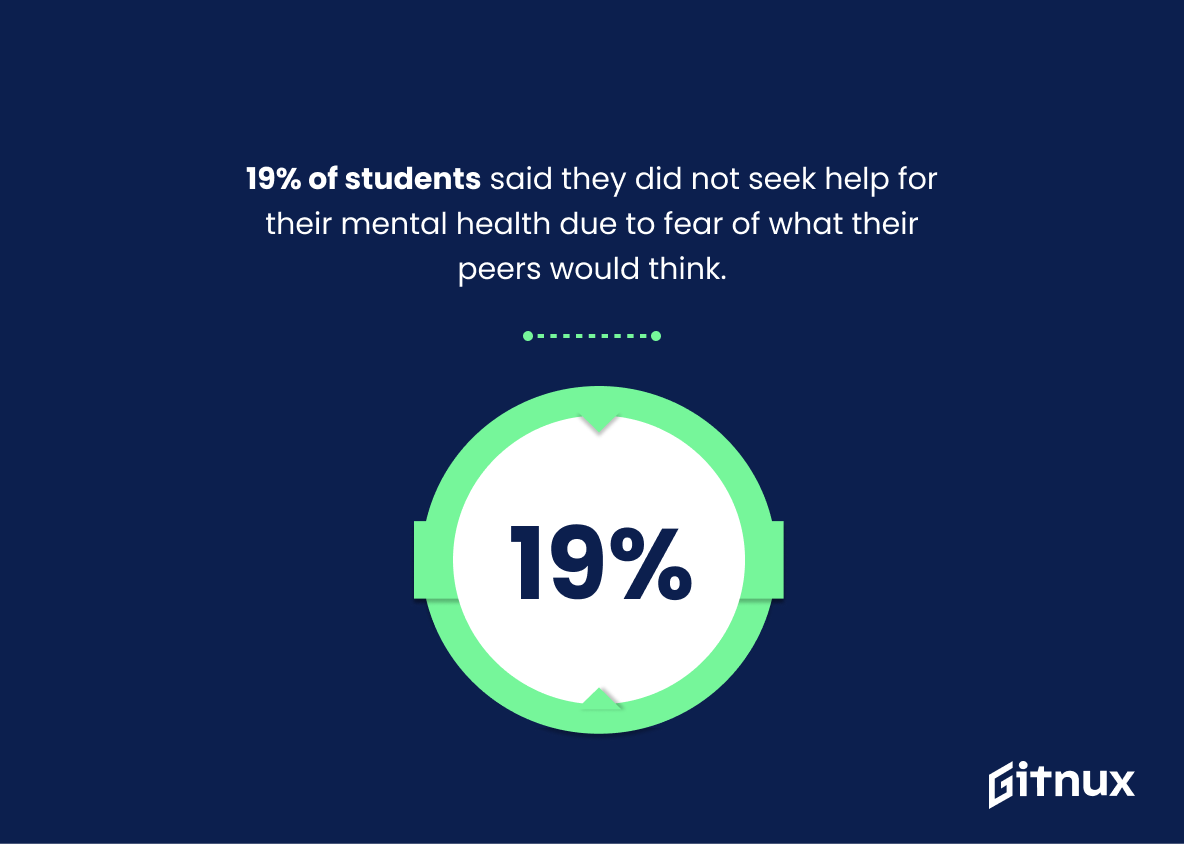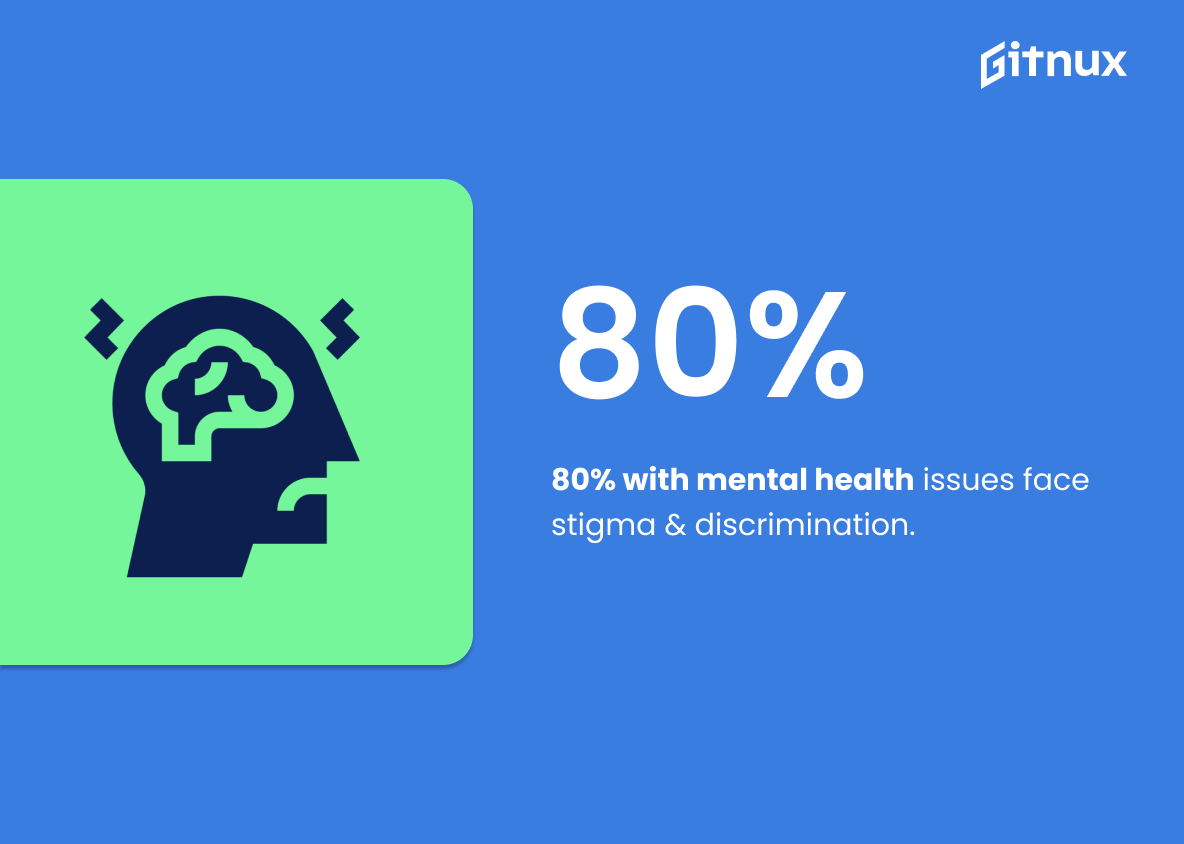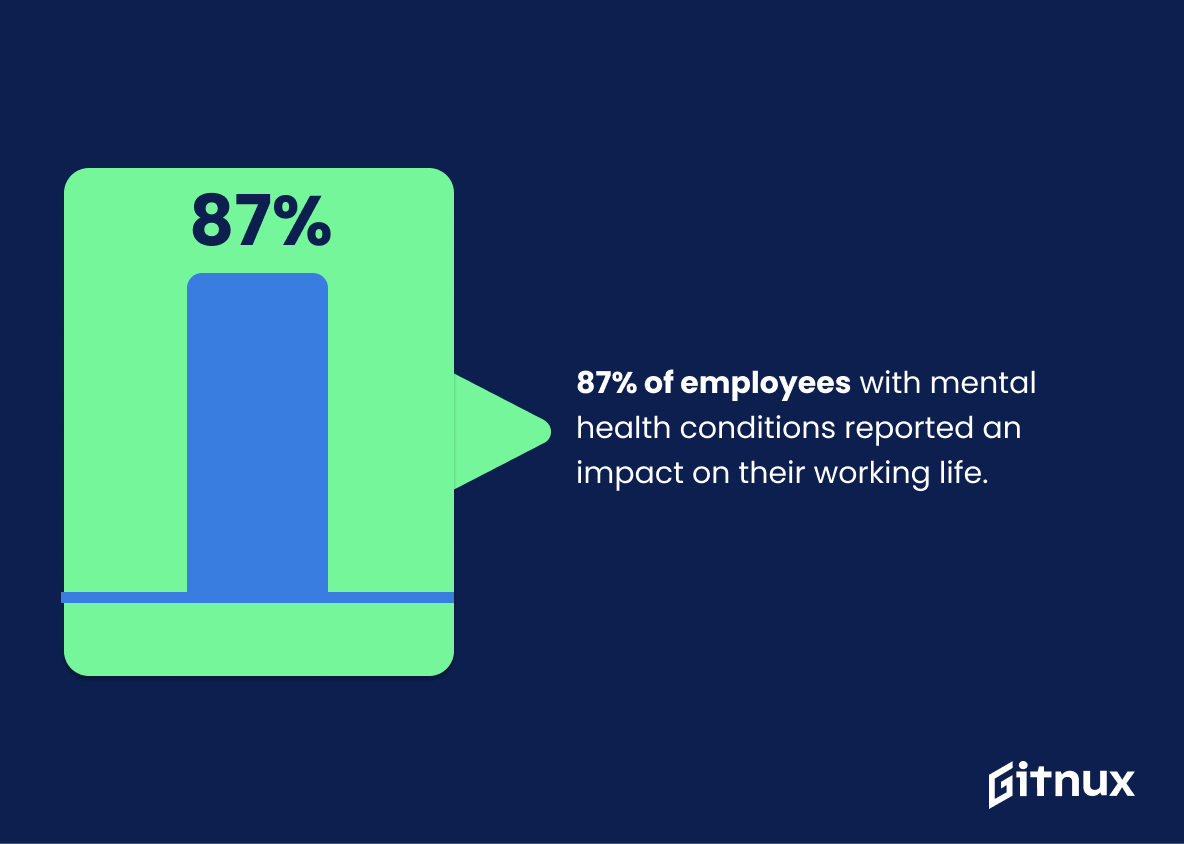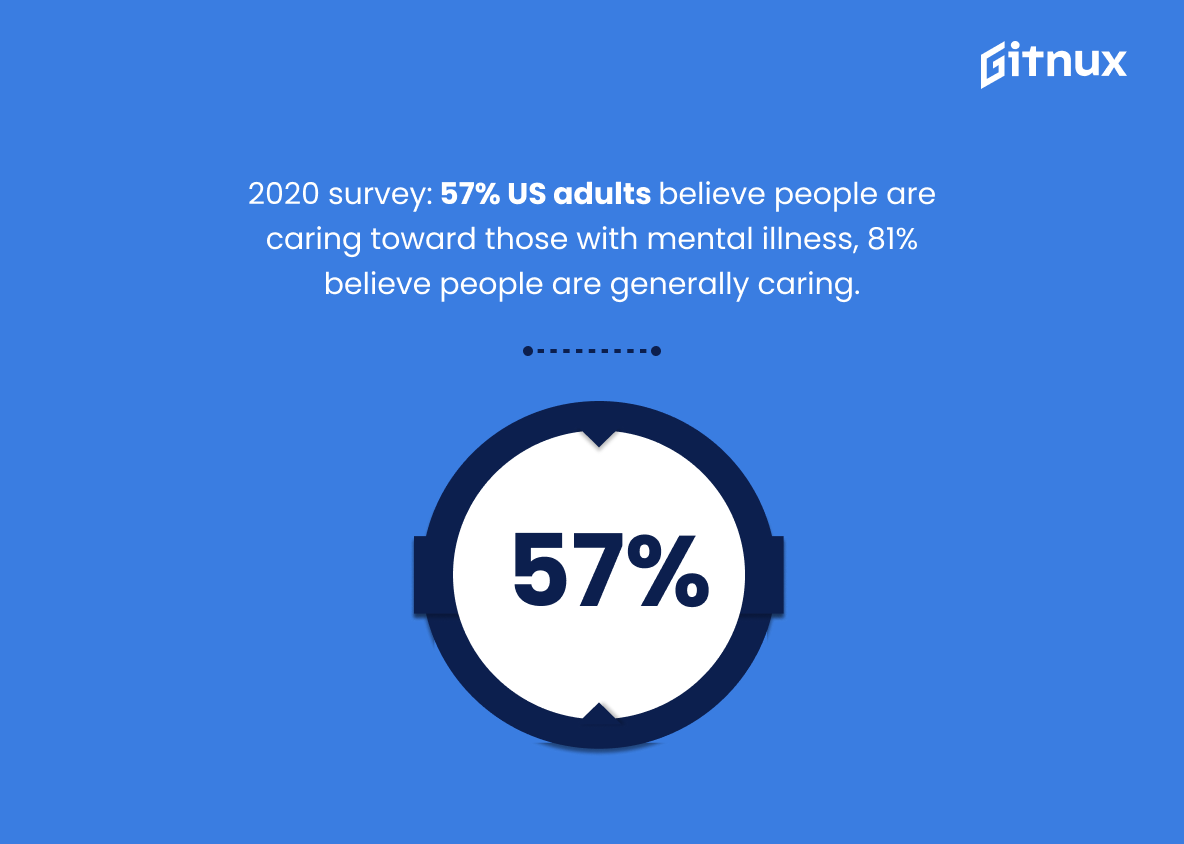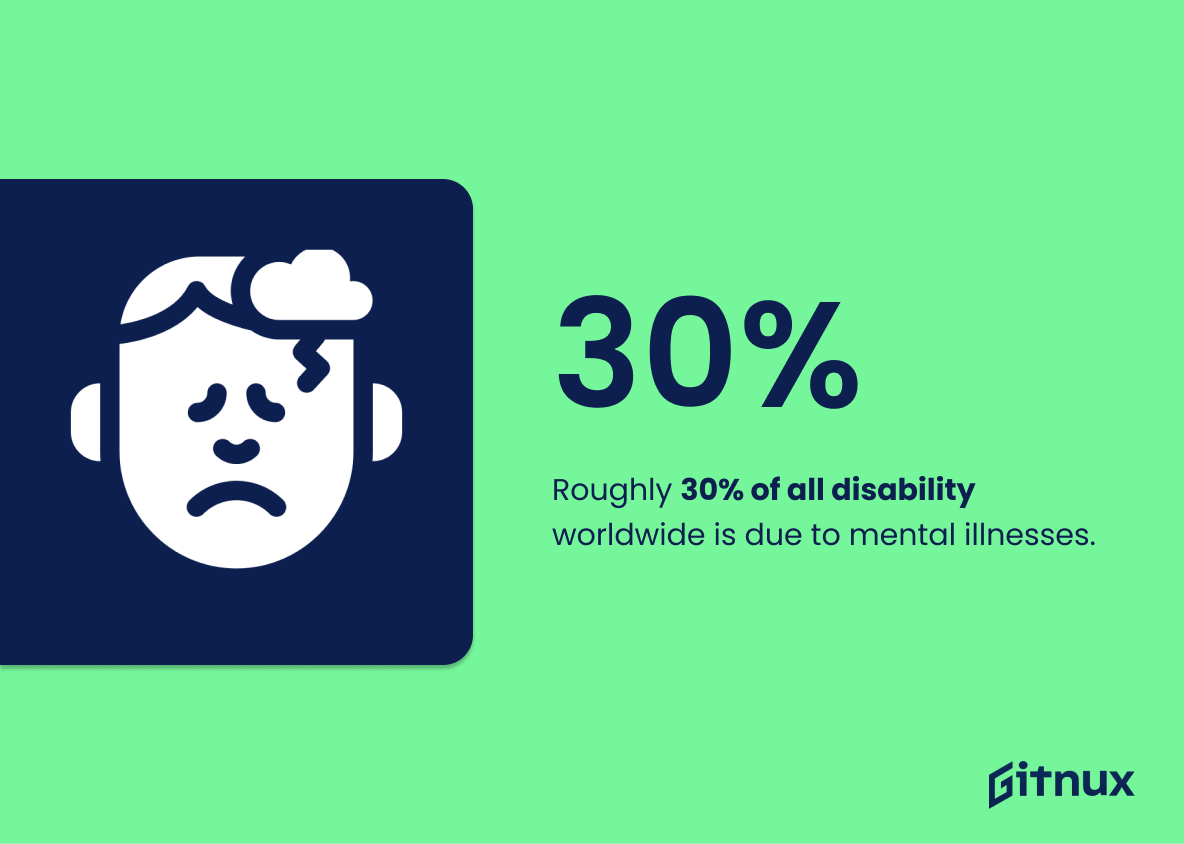In our society today, the unspoken issues around mental health continue to loom large. Many people silently grapple with mental health conditions, often in the shadows, due to fear of prejudice and misunderstanding. This deep-seated stigma against mental illness isn’t just unfortunate, it’s detrimental to those impacted. It can deter early detection, discourage seeking treatment and create a barrier to open discourse. A critical step towards combating this stigma is through understanding it in numerical terms. Through the lens of cold, hard data, we will delve into exploring mental health stigma statistics. Our journey would shed light on the prevalence of mental health stigma, its far-reaching effects and the need for increased understanding and acceptance of mental health issues on an individual and societal level.
The Latest Mental Health Stigma Statistics Unveiled
One in five U.S. adults experience mental illness each year, but more than half do not receive treatment partly due to stigma.
Disclosing the statistic that one out of five U.S. adults grapple with mental illness annually, but more than half abate the idea of seeking treatment, primarily due to stigma, paints the grave reality of our society. It serves as a glaring beacon, highlighting the pressing necessity of destigmatizing mental health issues and sparking conversation.
For a blog post concentrated on Mental Health Stigma Statistics, it’s pivotal to lace the content with this figure to spotlight the magnitude of the problem. The statistic connects the readers with the chilling perspective of people who are caught in the struggle against mental illness, silently going through their ordeal, afraid to seek help due to societal prejudice.
Above all, it underlines the unnerving fusion of medical challenge and the crippling societal stereotypes that make mental health a looming issue in today’s world. This statistic could help us push the boundaries of understanding, encouraging empathetic conversations and prompting individuals, communities, and policymakers to make efforts towards creating a less stigmatized world that fosters mental well-being.
In the U.K., 9 out of 10 people with mental health problems experience stigma and discrimination.
The compelling statistic – ‘ In the U.K., 9 out of 10 people with mental health problems face stigma and discrimination’ – usher in a wave of resonance and urgency to our discourse. It eloquently paints a stark picture of the troubling landscape of mental health stigma in the U.K. This numerical testament underscores not just the widespread nature of the prejudice and misunderstanding surrounding mental health issues, but also the painstaking truths that those dealing with such challenges often contend with. It stands as a silent, yet potent, clarion call for change, demanding our heed in unraveling the murky layers of stigma and sparking conversations towards a more inclusive, understanding society.
Around 60% of people report experiencing mental health stigma, according to a survey by See Change.
Consider the unveiling truth of this statistic: If approximately 60% of individuals have reported experiencing mental health stigma according to a survey by See Change, this sharpens our awareness of a pervasive struggle that remains largely hidden within society. In the scope of a blog post centered on Mental Health Stigma Statistics, the gravity of this finding cannot be overstated. It stands as a glaring testament to the urgent necessity for discussion, education, and progressive change. This statistic underlines the magnitude of those grappling with mental health stigma, highlighting the pressing reality that this is not a fringe issue, but a mainstream one affecting more than half of those surveyed. By weaving this fact into the narrative, the blog post becomes a powerful tool in exposing the breadth of the stigma, shining a light on the significance of collective endeavors to mitigate its impact.
Discrimination and stigma are the two biggest obstacles to a productive public dialogue about mental health.
Interpreting the narrative of discrimination and stigma being the most significant impediments to fruitful discussions on mental health, one should pay particular attention. This powerful statistic shapes the heartbeat of a blog post around mental health stigma statistics, setting an intriguing landscape ripe for exploration.
This potent piece of data touches the reality that millions struggling with mental health issues are caught in – facing negative stereotypes and judgments. It creates urgency for its reader, challenging them to delve deeper into the implications and face the harsh realities of mental health stigma. What the statistic does is expose the underside of societal attitudes towards mental health issues.
Moreover, it triggers a set of questions revolving around the ‘why’ and ‘how’ – Why is public dialogue around mental health stunted by stigma? How has discrimination created barbed-wire fences of misunderstanding and avoidance? This statistic doesn’t just speak volumes—it begs its audience to become more curious and engaged.
The statistic brings the importance of dismantling these barriers to the frontlines, an essential quest in better understanding mental health and, ultimately, enhancing the quality of life for those who endure mental health disorders. It underscores that prejudice and discrimination aren’t abstract concepts; they deter productive conversation, contribute to misinformation, and prevent people from seeking and receiving the help they need. Thus, it’s not just a statistic—it’s a call to action.
19% of students said they did not seek help for their mental health due to fear of what their peers would think.
Unveiling the figure that 19% of students didn’t secure aid for their mental health due to peers’ presumed judgment casts a glaring spotlight onto the crushing weight of stigma attached to mental health. It’s disconcerting to think one in every five students sits silently in struggle, tethered by the invisible chains of societal perception. This data infuses urgency into the discourse about mental health stigma, underscoring the substantial barrier it poses in reaching out for help. In the narrative of stigma statistics, it’s a stark reminder of the vital dialogue and understanding still required to break down the walls of fear and judgement surrounding mental health.
Nearly 8 in 10 people experiencing a mental health problem say stigma and discrimination have a negative effect on their lives.
Peeling back the layers of this compelling statistic reveals a profound truth — a staggering 8 in 10 individuals grappling with mental health issues attest to stigma and discrimination casting a dark and debilitating shadow on their lives. This evidence undeniably emphasizes the depth of the situation and the urgency needed to change it.
In a blog post dedicated to unpacking Mental Health Stigma Statistics, such a vital piece of statistical information acts as a strong and influential beacon. It compellingly draws reader attention to the distressing reality that a significant majority of people dealing with mental health problems are not only contending with their conditions, but are also shouldering the burden of societal bias and prejudice. This statistic, therefore, is not just a mere number, but a real-life mirror reflecting the grim experiences of those afflicted.
Furthermore, it underlines the crucial necessity to address this widespread stigma and incite a societal shift in how we perceive and respond to mental health. By boldly laying bare the pervasive link between mental health issues and societal stigma, this statistic empowers readers to reshape their perspectives and engage in meaningful conversations about mental health. All in all, the power of this statistic lies in its ability to shed light, provoke thought, and inspire change.
1 in 4 people with mental health issues believe their job prospects are worsened by the stigma surrounding mental ill health.
Reflecting on the stark reality underscored by this statistic, it offers a macroscopic glimpse into the deep-seated obstacles faced by individuals grappling with mental health issues. It underscores how, tragically, an alarming proportion – 25%, or 1 in 4 individuals – perceive their earning potential and career growth to be hindered by their mental health conditions. This palpable fears and anxiety is less about their symptoms or conditions per se, but rather the pervasive stigma shrouding mental health matters. Hence, this statistic punctuates the urgent need to dismantle societal stereotypes, prejudices, and discriminatories attitudes that unduly limit opportunities for these individuals. In essence, it proves a stirring testament to the intertwined struggle against mental health stigma, for both personal validation and gainful, fulfilling employment.
Over a third of people waiting to receive mental health treatment feel stigmatized.
Highlighting the chilling fact that over a third of individuals awaiting mental health treatment experience feelings of stigmatization paints a picture streaked with societal judgement and misunderstanding. It unearths the silent trials and tribulations casting a lonely shadow over the journey towards mental health recovery. This revelation propels us to scrutinize the mirrored reflection of our societal mindset towards mental health, becoming a focal point of our conversation on unmasking the entrenched biases. Such potent figures draw in the attention of readers, serving as a sobering reminder that mental health stigma is far from an abstract concept – it’s a harsh reality faced by a significant proportion of those seeking help. These captured voices, translated into cold hard digits, serve as footprints in the crusade towards fostering a safe and supportive environment for the mental health community in need.
87% of employees with mental health conditions reported an impact on their working life.
Depicting the profound influence of mental health conditions on occupations, a riveting statistic indicates that as high as 87% of employees afflicted with such conditions have acknowledged a tangible disruption in their working life. When viewed through the lens of a blog post focused on Mental Health Stigma Statistics, this striking number underscores the significance of addressing mental health issues in workplaces. The statistic serves as a potent reminder that mental health conditions not only affect individuals in their personal space but also infiltrate their professional lives, accentuating the urgency for adequate supportive measures. Hence, the statistic unequivocally captures the need to eradicate the stigma around mental health in order to enhance the professional productivity and personal growth of employees battling such conditions.
According to a 2020 survey, about 57% of American adults believe that people are caring toward persons with mental illness, while 81% believe that people are generally caring.
Unveiling this statistic paints a vivid image of the prevalent societal attitude towards mental health in the United States. It reveals a crucial yet concerning gap between general empathy (81%) and the understanding and compassion towards those battling mental illness (57%) present in the country. Such a disparity underscores the level of stigma attached to mental illness that could inadvertently fuel further hesitance and discomfort among those who should seek help. As contributors to the discourse on mental health stigma statistics, this data sets the stage for profound conversations about the need for more inclusive and empathetic attitudes, pulling back the curtains on the disparity that demands urgent attention.
Roughly 30% of all disability worldwide is due to mental illnesses.
In painting a vivid image of the silent epidemic that lurks in our society, we turn our spotlight to an alarming finding: Roughly 30% of all disability worldwide is attributed to mental illnesses. This statistic serves as a stark reminder in the panorama of Mental Health Stigma Statistics. It underscores the sheer magnitude and broad sweep of mental health disorders, rippling across the globe and destabilizing lives with an often invisible but profound impact.
Delving into the heart of this statistic, we disentangle the narrative around mental health and its prevalent stigma. Herein lies the silent dialogue of millions wrestling with mental health afflictions, spotlighted by a harsh yet truthful statistic. As we churn these numbers, reflecting societies across continents, the echoes of these voices become louder and more prominent.
Shattering the illusion that mental illness is a ‘lesser’ disability or an ‘invisible’ affliction, it calls to replace ignorance and dismissiveness with knowledge and empathy. It’s a vital component in our endeavor to raise awareness, fuel advocacy, and propel policy change, highlighting the pressing need to combat the stigma, recognize mental illnesses, and prioritize mental healthcare globally.
Only 44% believe that mental and physical health are equally important, linked to societal stigmas around mental health problems.
Delving into the depth of this statistic, we unearth a profound revelation of a societal misconception – a belief held by less than half of our population that mental health stands on an equal footing with physical health. In the grand scheme of a blog post about Mental Health Stigma Statistics, this point provides a key that can unlock our understanding of the vast and pressing issue of mental health stigma. It acts like a spotlight, illuminating the gap in knowledge and perception that surrounds mental health issues, ultimately shedding light on the urgent need for a paradigm shift in society’s collective viewpoint. This statistic importantly echoes as an urgent call to loosen the grip of ages-old stigma associated with mental health issues, encouraging the readers to pay attention and join hands in creating a society where mental health is given equal importance as physical health.
Conclusion
Understanding and confronting mental health stigma is a critical part of improving the overall wellbeing of society. The statistics outlined in this post attest to the fact that stigmatization is still a significant barrier in the road to mental health recovery for many, breeding isolation, discrimination, and shame. By promoting awareness, empathy, and education, we can begin to dismantle the misconceptions around mental illness. Each one of us has a role to play in challenging misconceptions and paving the way to a more inclusive, understanding society. Let the numbers be a catalyst for change and inspire us to foster a society where mental health is discussed openly, treated effectively, and free from stigma.
References
0. – https://www.www.ncbi.nlm.nih.gov
1. – https://www.www.mentalhealthatwork.org.uk
2. – https://www.seechange.ie
3. – https://www.www.kff.org
4. – https://www.www.time-to-change.org.uk
5. – https://www.www.ethnicity-facts-figures.service.gov.uk
6. – https://www.www.apa.org
7. – https://www.hbr.org
8. – https://www.www.who.int
9. – https://www.sites.dartmouth.edu
10. – https://www.www.nami.org
11. – https://www.www.mentalhealth.org.uk
